Vasa Museum, Stockholm, Saturday November 30, 2002
The Vasa museum in Stockholm is a very nice museum of a single
ship which sank in 1628. So what's new? Well, two facts
contributed to this being a relic: first that it sank about 1/2 hour
into its maiden voyage -- not a great merit for its engineers, the
second one, almost a consequence of the first one, it sank in the
Stockholm archipealago, which is shallow and muddy. The acidic
mud and the absence of any worms, preserved the Vasa perfectly for
350 years.
After its discovery, it was salvaged, and it could actually
float back to the museum on its own -- after patching some
damage. That is an indication of how well it was preserved.
So many objects were found in the Vasa, (clothing, utensils, tools, etc.)
that it gave an entire view of life at the time, and enough
material for a museum. A lucky event for us.
The Vasa was supposed to be the top warship of king Gustav Vasa,
and it was built to impress the enemy with its grandiosity. Luxury,
impressive carvings, lots of cannons, bright colours, everything was
made to be impressive (not quite its seaworthiness though).
|

The museum is dimly lit to give a special effect on the Vasa and to make taking pictures more difficult
|
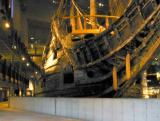
11:29
|
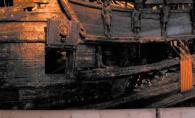
Details of the stem
|
|
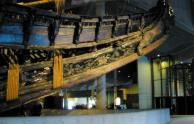
11:32
|
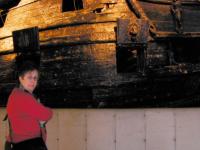
11:32
|
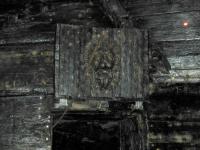
The cannon covers had lions on the reverse side, to scare you further if the cannon itself was not enough
|
|
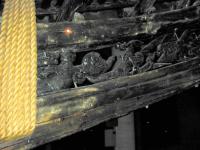
The curators made sure that the new material looks very different from the original
|
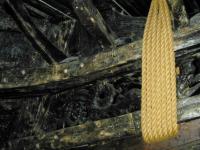
11:33
|
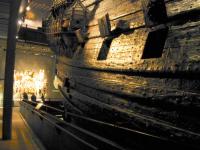
11:37
|
|
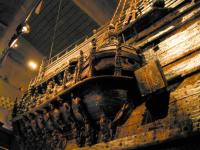
11:37
|

11:39
|
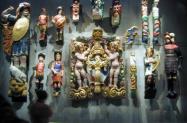
Some of the decorations restored to the original colours -- nice bellied angels
|
|
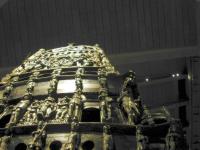
The stern
|
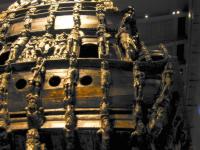
11:41
|
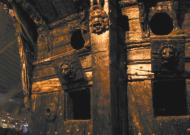
11:41
|
|
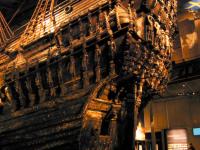
Incredible amounts of carved decoration
|
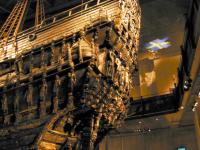
11:43
|
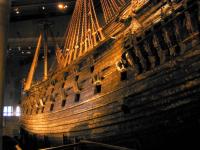
Notice the two decks of cannons, the curse of the Vasa
|
|
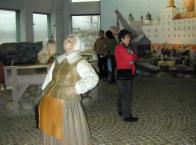
Marta mingling with the locals of Stockholm by 1628
|
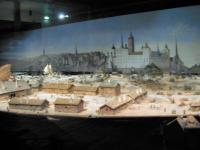
Maquette of the shipyards
|

12:10
|
|

12:10
|
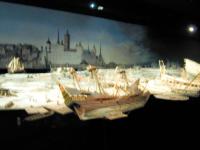
How they used to repair ships at the time
|

Bottom part of the rudder
|
|
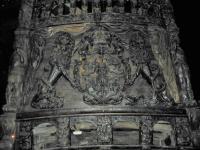
The main emblem on the stern (or counter)
|
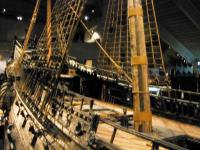
Views of the main deck, mostly reconstructed
|
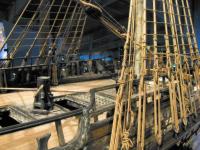
Parts of the masts and parts of the sails!! were recovered
|
|
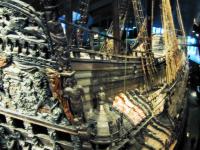
12:36
|
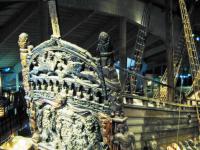
The top of the stern
|
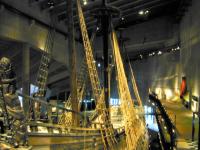
12:36
|
In the end it appears that the reason for its sinking was a
political one rather than an engineering one (as usual). The king
asked for an additional deck of cannons (to scare the enemy even more) and
then the builders were prevented from loading more ballast because
the first deck of cannons would be too close to the water. The
result: a very unstable puppy, that with the first side wind
tilted, let water in by the sides and sank.
Last updated on Sat May 1 05:53:29 EDT 2004 by GhG.





























